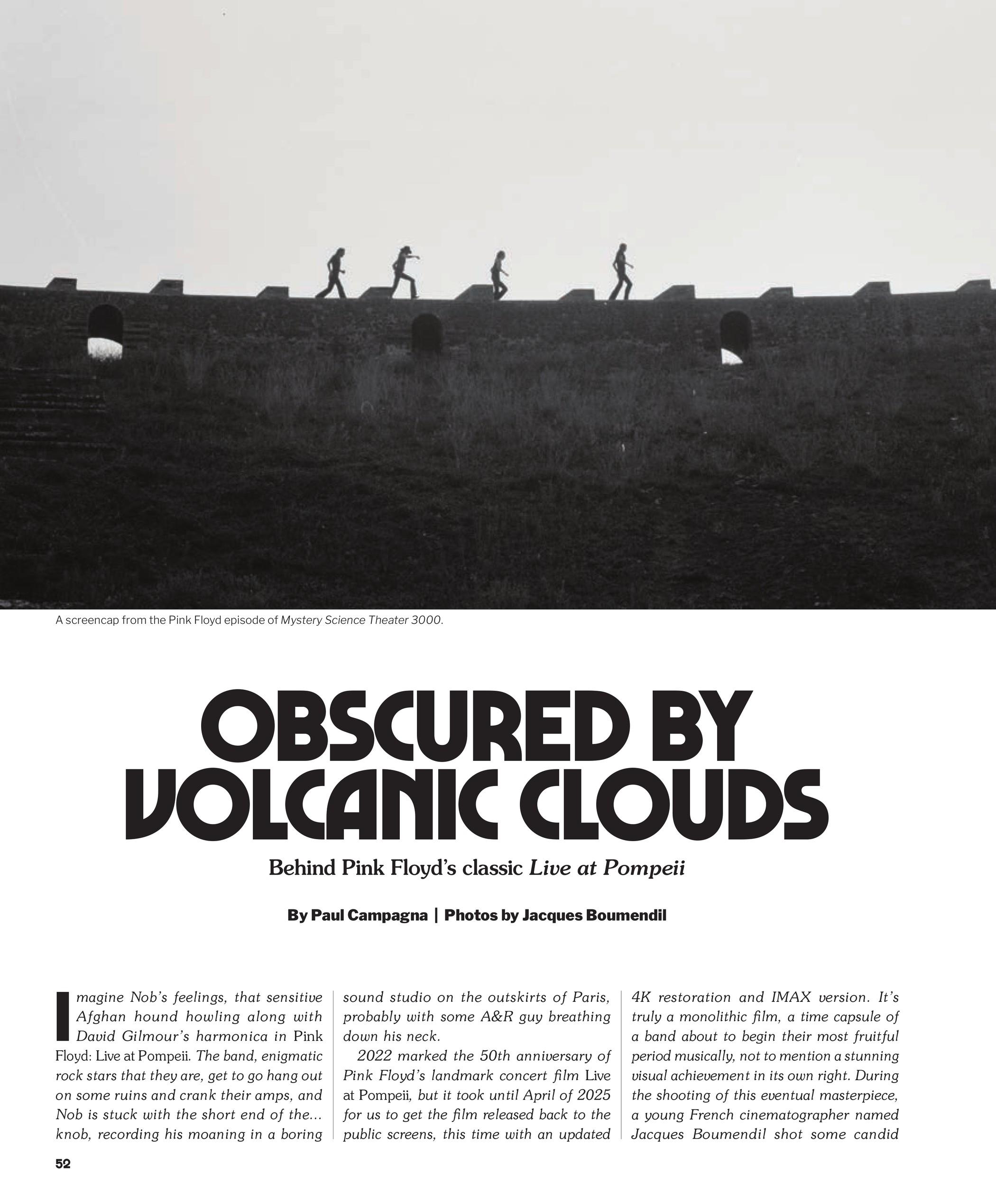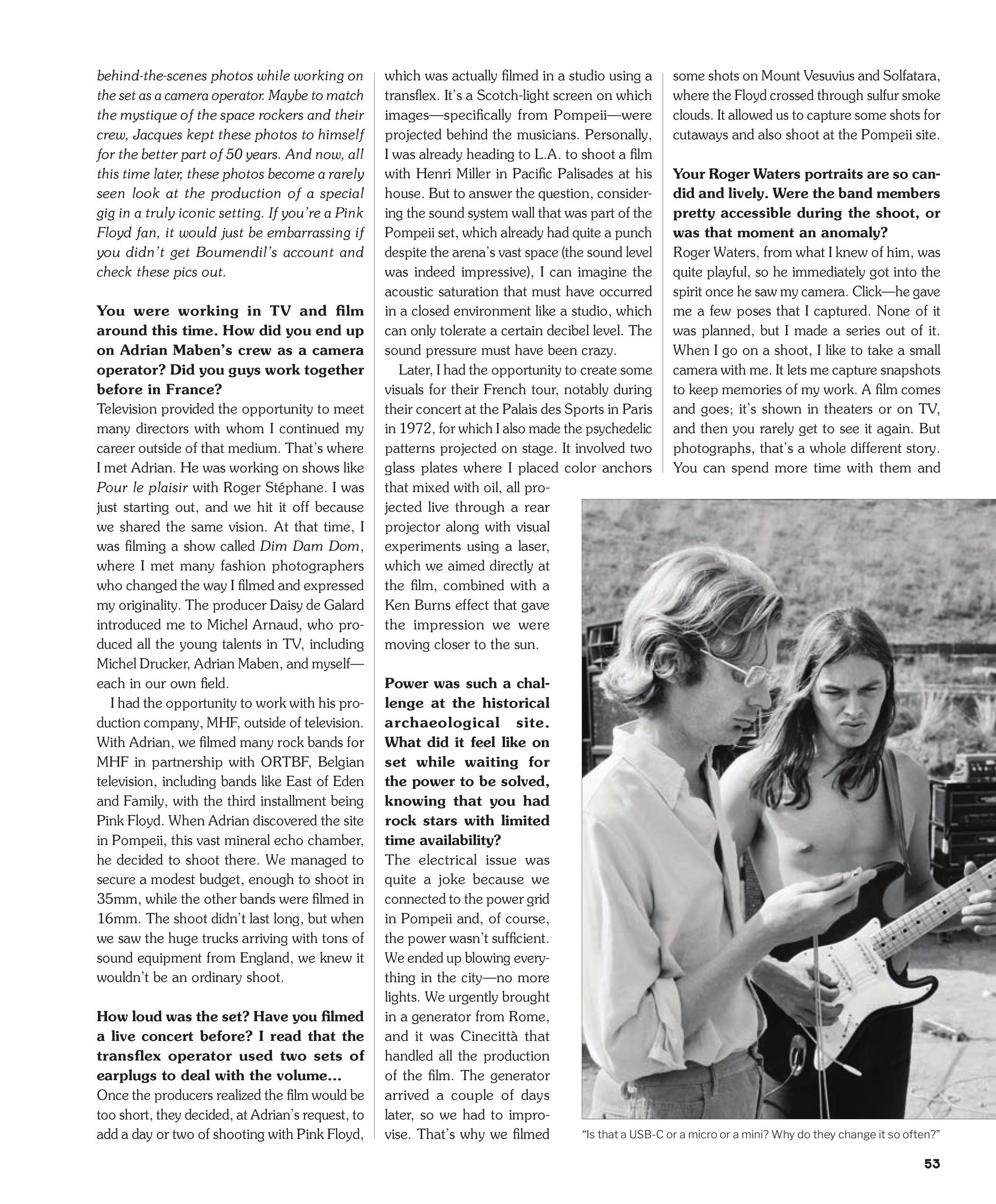OBSCURED BY VOLCANIC CLOUDS
Behind Pink Floyd’s classic Live at Pompeii
June 1, 2025


Photos courtesy of The Rebel Lens Gallery
Imagine Nob’s feelings, that sensitive Afghan hound howling along with David Gilmour’s harmonica in Pink Floyd: Live at Pompeii. The band, enigmatic rock stars that they are, get to go hang out on some ruins and crank their amps, and Nob is stuck with the short end of the... knob, recording his moaning in a boring sound studio on the outskirts of Paris, probably with some A&R guy breathing down his neck.

